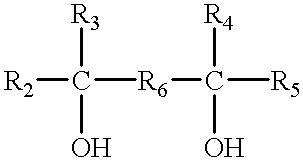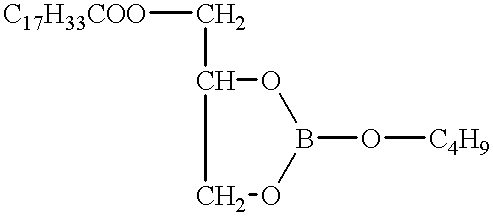Method for preparing rare-earth system sintered magnet
a rare-earth system, sintered magnet technology, applied in the manufacture of inductance/transformer/magnet, magnetic body, magnetic materials, etc., can solve the problems of reducing the amount of residual oxygen and carbon in the final sintered product, affecting the quality of the final product, and requiring the fabricated magnet to be more complicated. , to achieve the effect of excellent magnetic properties, easy production, and reduced residual oxygen and carbon in the final produ
- Summary
- Abstract
- Description
- Claims
- Application Information
AI Technical Summary
Benefits of technology
Problems solved by technology
Method used
Image
Examples
example 1-2
Raw materials comprising of Sm 11.9 at. %, Cu 8.8 at. %, Fe 12.6 at. %, Zr 1.2 at. %, balanced by Co along with an unavoidable impurity is melted in the high induction furnace in an atmosphere of Ar gas to obtain the button-shaped molten alloy. The alloy was coarsely crushed, crushed further down to an average particle size of about 15 .mu.m by a jaw crusher, followed by jet-milling to have an average particle size of 3 .mu.m.
To 100 wt % of the obtained rare-earth system alloy powders, the binder consisted of polymers and water with an addition amount as listed in Table 1-1 No. 11 and a plasticizer are added to produce granulated powders under the same procedures as Example 1-1.
After sieving the thus obtained granulated powders with the sieve size #440 for undercut of finer particle size and #70 for overcut of coarser particle size. The resultant average particle size and the yield percentage from the sieve #440 to the sieve #70 are listed in Table 1-2 No. 11.
Using the compression m...
example 2-1
To a 100 wt % of the rare-earth system alloy powders, similarly to Example 1-1, the binder (which is equivalent to binder type (2), as mentioned previously) consisted of polymers and organic solvents with addition amounts as listed in Table 2-1 No. 14.about.19 and plasticizer are kneaded and kneaded to make it in a slurry state at room temperature. The granulation was done under the same conditions as that of Example 1-1. Furthermore, an anisotropic sintered body was fabricated under same conditions of forming, sintering and heat-treatment as done for Example 1-1.
The slurry concentration before the granulation, the flowability of the granulated powders during the forming, and the residual oxygen and carbon as well as magnetic properties of the sintered permanent magnets are measured, respectively. The obtained results are listed in Table 2-2 No. 14.about.19. No breaks, cracks and deformation were observed on the final sintered body.
example 2-2
Similar to the Example 1-2, the binder (which is equivalent to the binder type (2), as mentioned previously) comprising polymers and organic solvents with addition amounts as shown in Table 3-1 No. 20.about.25 and plasticizer are kneaded to a 100 wt % of the R--Co system rare-earth system alloy powders, and kneaded to make it into a slurry state at room temperature. After the granulation is done at the same conditions utilized for Example 1-2, the anisotropic sintered permanent magnets are fabricated after forming, sintering, and heat-treatment.
The slurry concentration prior to the granulation, the flowability of the granulated powders during the forming, and the residual oxygen and carbon levels as well as magnetic properties of the sintered permanent magnets are measured. The obtained results are listed in Table 3-1 No. 20.about.25. No breaks, cracks and deformation were observed on the sintered body.
As clearly seen from Table 2-1, Table 2-2, Table 3-1, and Table 3-2, by adding a ...
PUM
| Property | Measurement | Unit |
|---|---|---|
| size | aaaaa | aaaaa |
| size | aaaaa | aaaaa |
| temperature | aaaaa | aaaaa |
Abstract
Description
Claims
Application Information
 Login to View More
Login to View More - R&D
- Intellectual Property
- Life Sciences
- Materials
- Tech Scout
- Unparalleled Data Quality
- Higher Quality Content
- 60% Fewer Hallucinations
Browse by: Latest US Patents, China's latest patents, Technical Efficacy Thesaurus, Application Domain, Technology Topic, Popular Technical Reports.
© 2025 PatSnap. All rights reserved.Legal|Privacy policy|Modern Slavery Act Transparency Statement|Sitemap|About US| Contact US: help@patsnap.com



